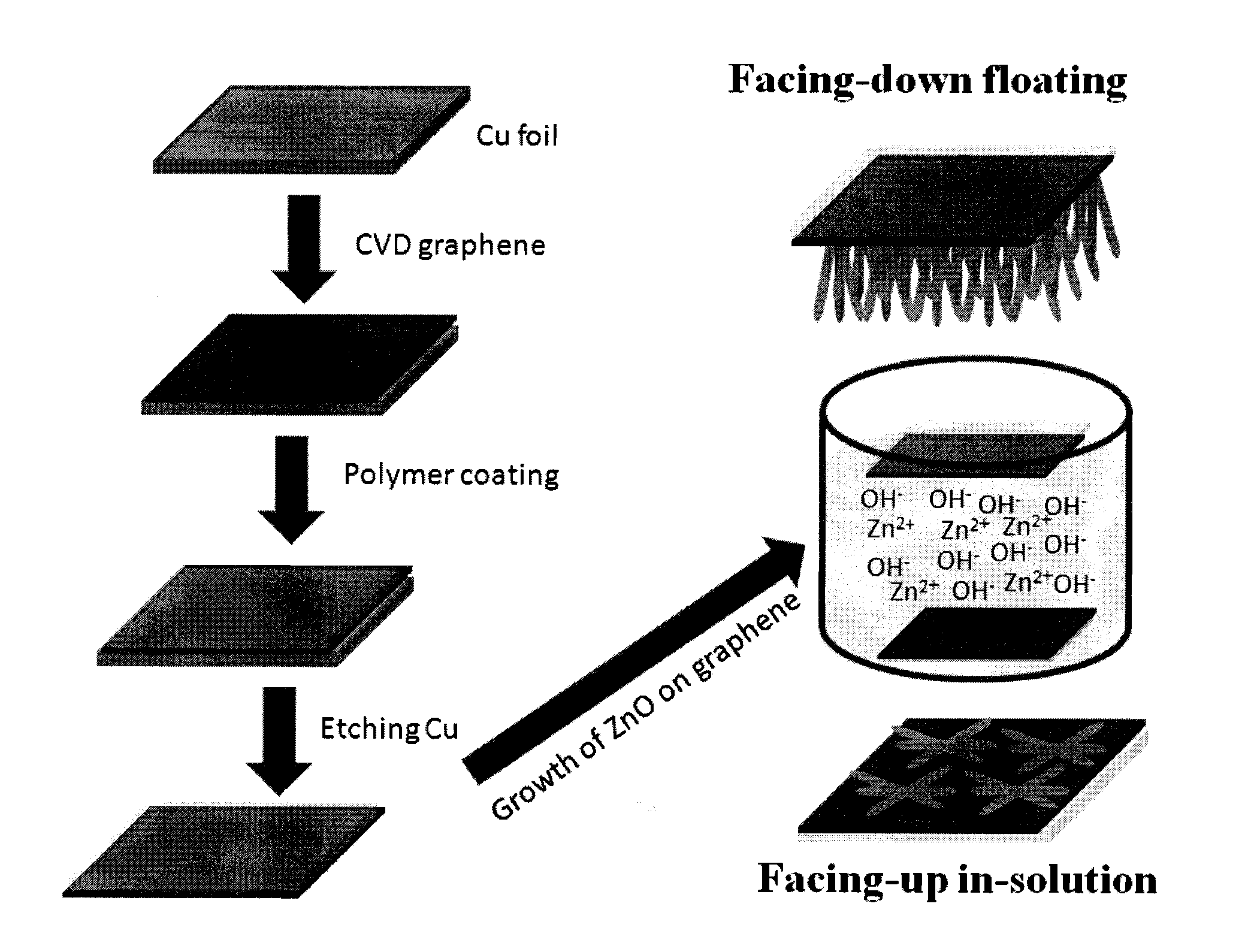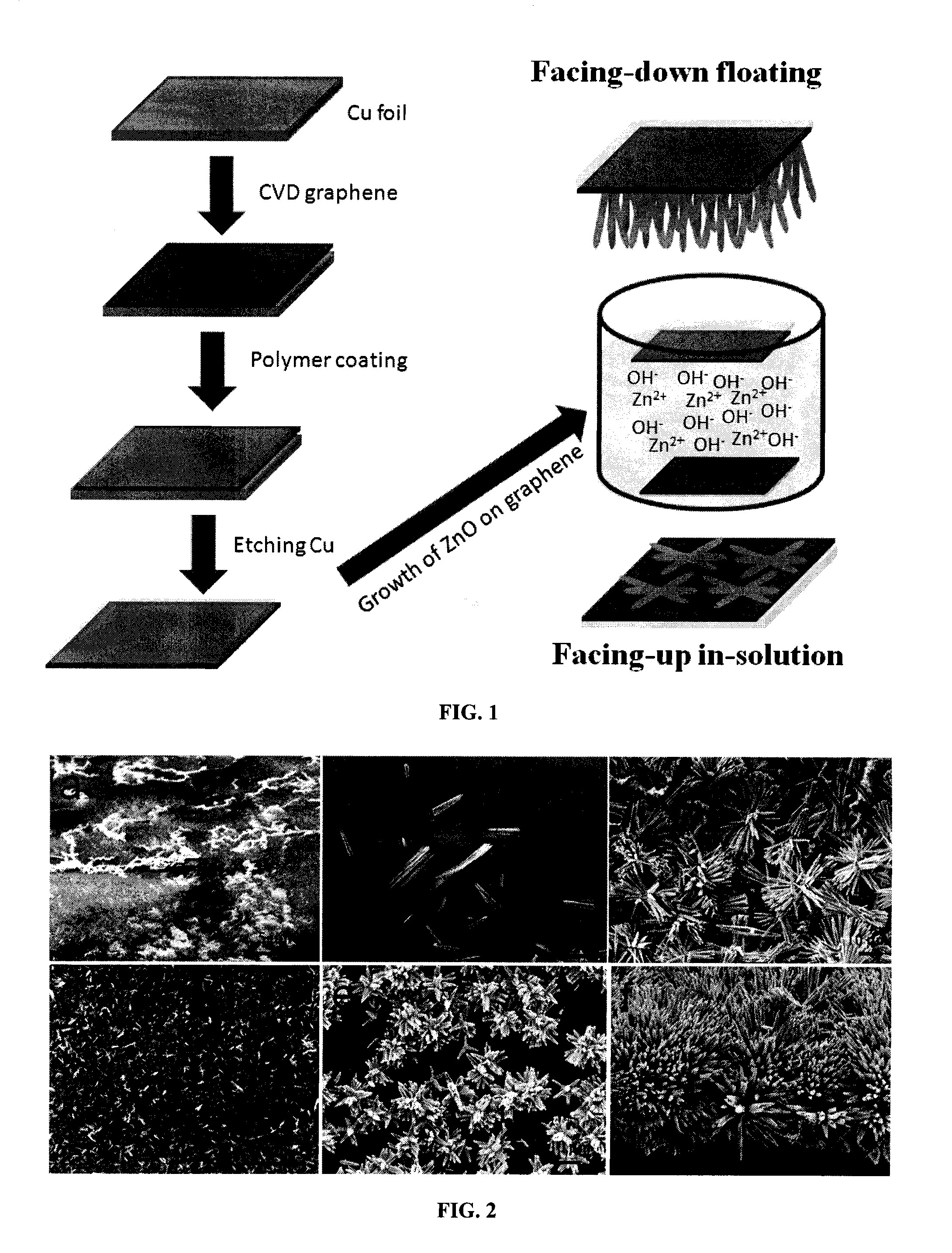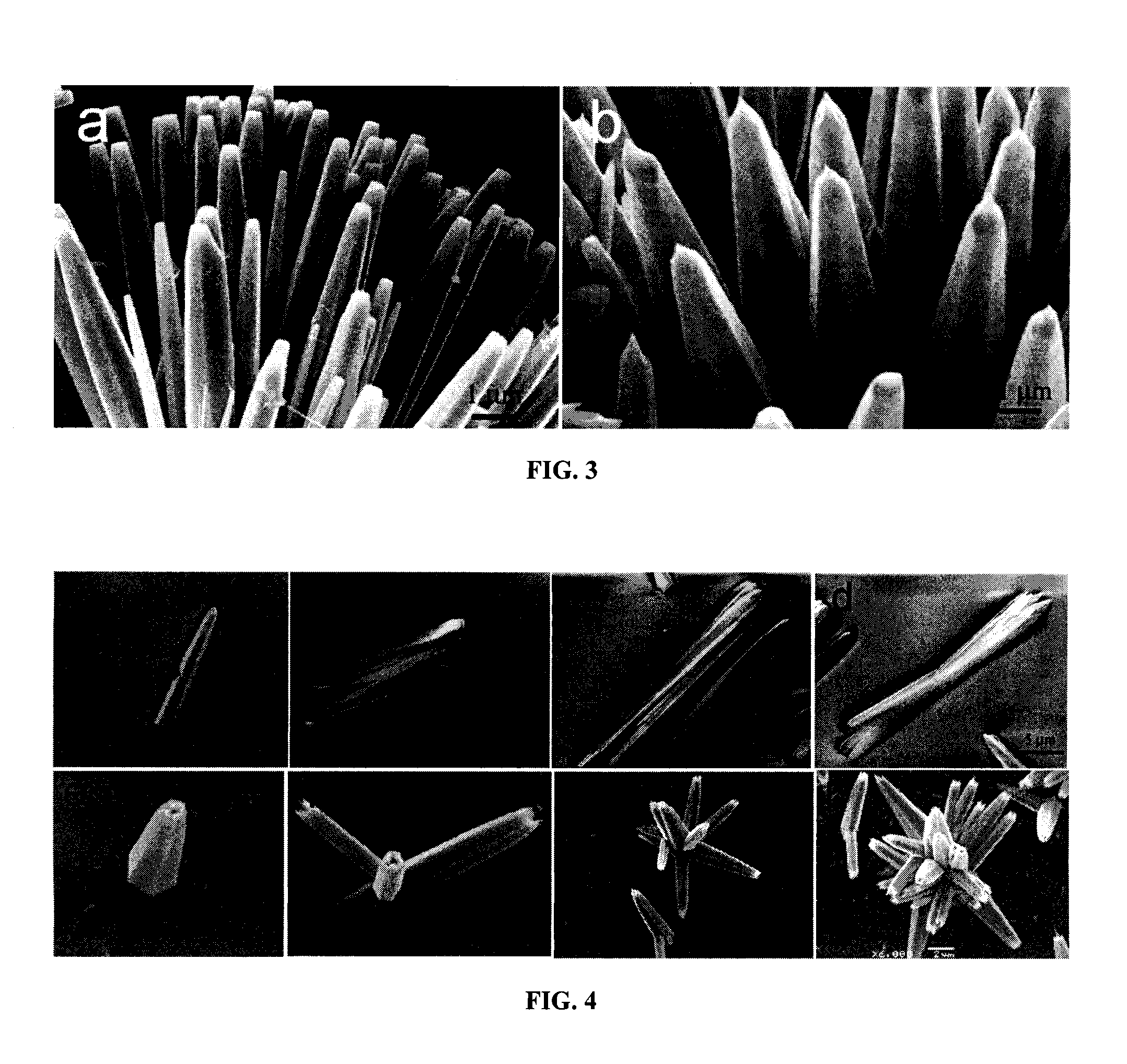Semiconductor-Graphene Hybrids Formed Using Solution Growth
a technology of semiconductors and graphene, which is applied in the direction of material nanotechnology, transportation and packaging, coatings, etc., can solve the problems of reducing the conductivity of graphene, reducing the reducing the band gap of graphene, so as to achieve high electrical conductivity of charge carriers, the effect of high mobility
- Summary
- Abstract
- Description
- Claims
- Application Information
AI Technical Summary
Benefits of technology
Problems solved by technology
Method used
Image
Examples
example 1
Synthesis of ZnO Graphene Hybrids
[0042]Synthesis of controlled aligned orientation of crystalline ZnO micro / nanowire on graphene sheets. FIG. 1 depicts respectively the facing-up in solution and facing-down floating growth processes for synthesis of the hybrid ZnO / graphene nanostructures. Graphene sheets were grown on Cu foils using CVD. PMMA was spin-coated on one side of the as-grown graphene before the sample was immersed into iron chloride solution (0.1 g / mL) for removal of the copper foil. After removing the Cu foil, the graphene sheets were either placed face-down or attached to a substrate for face-up in solution configuration for growth of ZnO micro / nanowires on graphene. For face-down floating growth of ZnO on graphene, the sample of PMMA / graphene floated on the surface of the solution during the entire procedure of the ZnO growth with graphene side facing down since the PMMA / graphene composite sample has a lower density than that of the solution. For face-up in solution, t...
example 2
Characterization of ZnO Graphene Hybrid Morphology
[0045]FIG. 2 includes the scanning electron microscopy (“SEM”) images of representative ZnO / graphene samples grown in solution for 3, 6, and 12 hours, respectively in the face-up (FIG. 2, panels a-c) and face-down floating configurations. After 3 hours solution growth, consideration differences can be observed in the two configurations. In the former, a substantial portion of the graphene surface area was covered with reaction residues or impurities (FIG. 2, panel a), which may prevent nucleation of ZnO directly on graphene. In fact, ZnO crystallites are barely observable in this case. In contrast, dense, uniform ZnO crystalline nanorods (see TEM data later for confirmation of the crystalline structures) were formed on graphene with negligible appearance of impurities in the latter configuration as shown in FIG. 2, panel d. The diameter of the ZnO nanorods is in the range of several to several tens of nanometers. This result suggests...
example 3
Crystal Structure of ZnO Graphene Hybrids
[0051]The crystal structure of the ZnO micro / nano-wires was characterized using X-ray diffraction (“XRD”) (Bruker SMART APEX). FIG. 7A shows the XRD θ-2θ patterns of a ZnO / graphene hybrid sample with 12 hour growth time. The diffraction peaks in FIG. 7A can be indexed to the wurtzite ZnO structure (JCPDS card no. 36-1451) and the lattice constants of this hexagonal phase are c0=5.21 Å and a0=3.25 Å, respectively (see Liu, et al. (2003)) The XRD diffraction peaks of (100), (002), and (101) are the most intensive ones. While (002) peak is expected for the c-axis oriented ZnO nano / micro-rods, the (100) and (101) peaks are also anticipated from the tilted ZnO nanowires as shown in panel f of FIG. 2. A further investigation on the ZnO micro / nano-wire microstructure using high-resolution transmission electron microscopy (“HRTEM”) (FIG. 7B) reveals the ZnO(0001) fringes perpendicular to the nanowire axis are on average separated by 0.26 nm, indicati...
PUM
 Login to View More
Login to View More Abstract
Description
Claims
Application Information
 Login to View More
Login to View More - R&D
- Intellectual Property
- Life Sciences
- Materials
- Tech Scout
- Unparalleled Data Quality
- Higher Quality Content
- 60% Fewer Hallucinations
Browse by: Latest US Patents, China's latest patents, Technical Efficacy Thesaurus, Application Domain, Technology Topic, Popular Technical Reports.
© 2025 PatSnap. All rights reserved.Legal|Privacy policy|Modern Slavery Act Transparency Statement|Sitemap|About US| Contact US: help@patsnap.com



